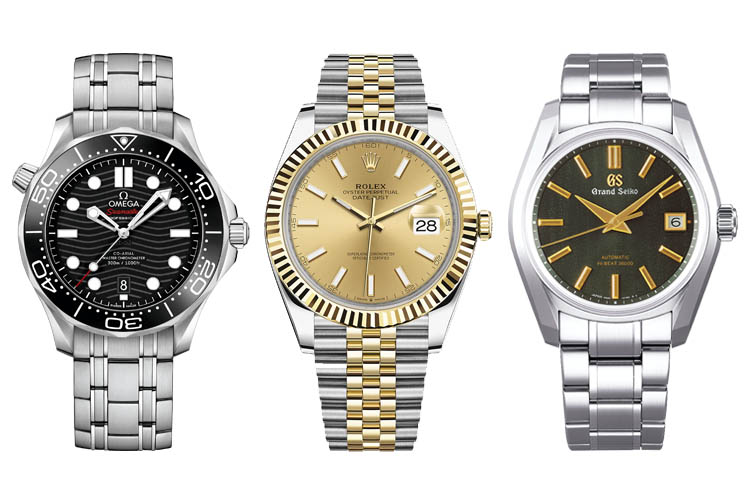
If you are familiar with the different types of watch movements, then you know what an automatic watch is.
Essentially, an automatic watch is a mechanical watch with a self-winding component, powered by the movement of the wrist of the wearer. A mechanical watch, on the other hand, requires manual winding of the crown, most often, every day at the same time, to ensure accuracy and precision.
Before we get into the accuracy of an automatic watch, let’s look at its origin and functions. Watch engineers developed the idea of a self-winding mechanism in a mechanical watch to counter the challenge of manually winding the watch every day. Designed originally in the 1900s, the automatic movement functions by drawing the energy of the wrist movement. Then, the rotor present in the movement converts and stores the energy to build tension in the “heart” of the watch. Which then converts it to power to enable the movement of the hands.
However, it is apparent that without regular wrist movement, the does not retain the power to function smoothly. You can check how much power your watch holds by monitoring the power reserve indicator, often displayed on the face of the dial. Given this fact, many may wonder how accurate the watch can be. Would it go fast if the movement is too fast? What happens if there is no movement for a long time? How does lack of movement affect accuracy, and so on?
In this regard, we aim to break down how accurate an automatic watch is and some things to keep in mind if you are looking into investing in one, or already own one.
What’s Acceptable Accuracy For an Automatic Watch?

Automatic watches are pretty accurate. To the extent, they either gain or lose only 25 seconds per day. On a bigger picture, reports indicate that a standard automatic watch is generally 99% accurate. Typically, brands provide the details of the movement, its precision, and accuracy along with the watch description. This will inform you of how accurate your watch is.
Most often, watch enthusiasts who rely on extreme accuracy and precision look for close to 4-5 seconds variations, or even lesser, in a day. This comes with chronometer movements. Therefore, what is acceptable to you depends on your needs and the functions of the watch. If you are a diver or a pilot, for instance, you will want your watch to be as accurate as possible with as little deviation in seconds. However, if you want a watch for regular daily wear, then a 10 or 20-second variation in a day will make no difference.
What Are COSC-Certified Chronometers?
Chronometers are components of mechanical and automatic watches, placed to increase efficiency and accuracy of the movement. To ensure the legitimacy of its function, a Switzerland-based NGO called the Contrôle Officiel Suisse des Chronomètres or COSC offers official certification when watches pass their testing for accuracy.
It is a rule that only watches with COSC certification can officially use the tag ‘certified chronometer’ as part of the watch description. If your watch comes with a COSC certification, you can blindly believe that the watch is as precise as it can be. Watches that go through the COSC testing undergo various rounds of rigorous testing under different conditions. Generally, it is a 16-days long testing period where the movement undergoes different temperature settings at different positions.
You may also notice that watches with COSC certification don’t come cheap. These movements take highly skilled craftsmen to design, develop and hand-assemble before qualifying for the COSC testing. This process is cost-heavy along with the cost of testing, which warrants the high price of these automatic watches.
Automatic vs Quartz Accuracy
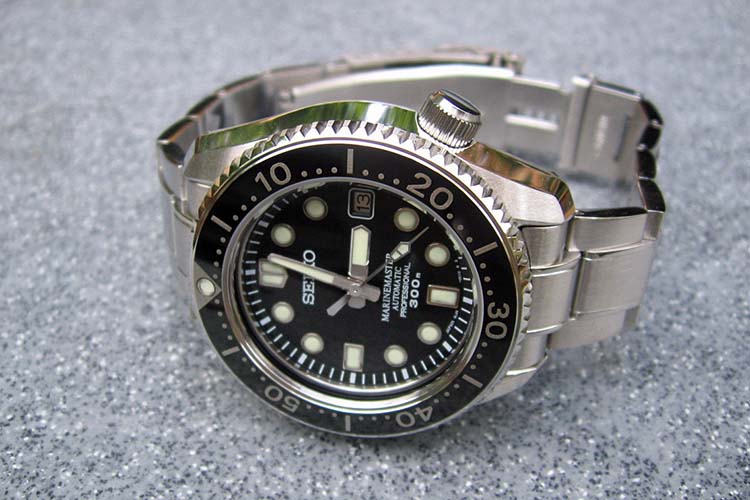
Automatic watches have double or more moving parts than quartz watches. The energy drawn from the movement of the wrist by oscillating weights transmits to the gears to power the watch to function. The balance wheel and the oscillating weights work to keep a balance within the movement and work in tandem to ensure smooth timekeeping. Naturally, this means that many small components come in contact with each other, constantly, multiple times in a day. This constant contact between these parts generates friction, which is the main reason for the small variation in the accuracy of the watch.
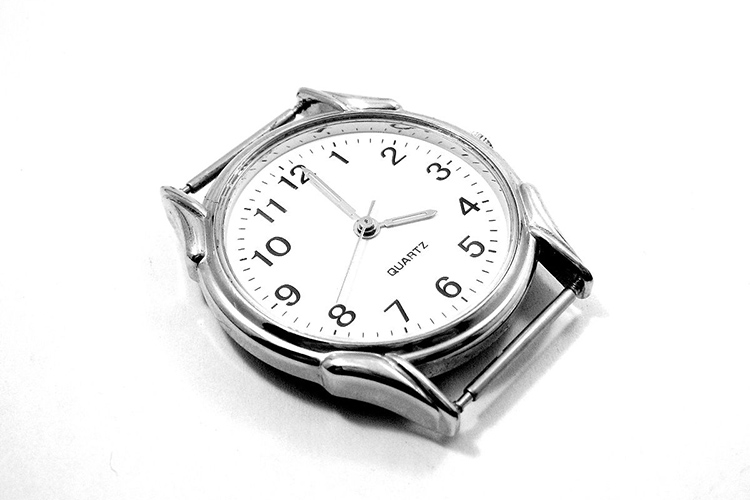
On the other hand, quartz watches have a higher degree of accuracy than automatic watches. That is, it can lose or gain only up to one second a day. When compared to an automatic watch, you may wonder if the quartz is a better option for accuracy. This is because quartz watches have fewer moving parts, and this means lesser friction, and lesser friction between the components means lesser loss of time. Additionally, quartz movement uses a quartz crystal to keep the timekeeping functions alive. These crystals give out constant vibrations to generate electrical charges to keep the watch powered.
For these reasons mainly, even the cheapest of quartz watches have better accuracy and lose only up to a few seconds even after months and years of use. Moreover, unlike automatic watches, a quartz movement does not depend on an external factor to wind the watch. A powered battery within the watch does all the work. As a result, there are lesser parts to tune in every day, and hence, higher accuracy.
At the end of the day, there are pros and cons to both automatic and quartz watches. Check out our article to know more!
How To Measure Your Automatic Watch Accuracy
Before we understand how to measure the accuracy of your watch, it is noteworthy to remember that accuracy and precision have different meanings in watchmaking. Accuracy refers to the deviation from a certain point of reference. This is where a deviation of a few seconds denotes the accuracy (or, lack thereof) of the watch. Precision, on the other hand, is the average variation over time.
To explain further, a watch may lose 2 seconds every day, but by consistently doing so, the watch maintains precision. However, the 2-second loss, by itself, talks to the accuracy of the watch. In other words, consistency is precision, and no deviation of time is accuracy. There are three simple ways to measure the accuracy of your automatic watch.
App on your smartphone
One way is to use your smartphone. Most OS these days come with an accuracy app in the App store. The app calculates the accuracy rate by entering the details of the watch, which then lets you know the potential variation. With this method, you will need to track your app with inputs on a daily basis for checking its accuracy. And, then set the variation right on your watch, manually.
Timergraph
The second way is to use a timergraph. This device is common with watchmakers to check the accuracy of the watch. The advantage of using a timergraph is that it displays the result immediately. By placing it on the device, the timergraph is able to display the accuracy and beats of the timepiece. You can easily find this online if you are willing to go the extra mile, or you can check with your local watchmaker.
Stopwatch comparison
The third easiest way to check for the accuracy of your watch is to use a stopwatch. For this method, start your stopwatch right when the seconds’ hand on your watch reaches 12. The minute and hour hands are irrelevant for this method. Leave it on for a couple of hours, and slowly your watch may either pull ahead or pull back a few seconds over the few hours. This will let you know how many seconds your watch loses or gains in a day.
Alternatively, there are also many tips online on how to check for accuracy at home. At the end of the day, whatever works best for you, does the job well.
What Causes Automatic Watches to Lose accuracy?
The accuracy of a watch depends on many factors. While it is true that watches can lose some time over long periods, the factors causing the slight variation in time are many.
Friction
As noted above, friction is the most common factor for watches to lose time. Mechanical watches, be it manual or automatic, have multiple moving parts. These parts are constantly rotating, spinning, or rubbing against each other. Over time, this causes friction, which ultimately causes the loss of some time. Laws of physics are not something watchmakers can work around!
Magnetism
In some cases, your watch can gain 10 to 20 seconds every day consistently. This is a result of the coils sticking closer to each other, shortening the rotations and increasing the heartbeats. If this is happening to your automatic watch, then a magnetic effect is causing this to happen. The only remedy is to correct it from a repair shop. This is not something anyone can correct from their homes.
Temperature
In some cases, temperature affects the balance wheel and hairspring, causing them to either shrink or expand. Due to this, change, a few seconds variation is unavoidable. Although, this is not a common issue in modern times, given that new technology and new components are replacing age-old parts. For instance, many brands now develop in-house metals that ensure everlasting durability and rigidity. These ensure that the parts don’t change their shape due to temperature as easily.
Position
Keep your automatic watches flat on their back, when not in use. When the position of the watch tilts or shifts, the gravity can cause the balance wheel to adjust, inevitably, causing a few seconds’ loss of time. Alternatively, many recommend storing the automatic watch in a watch winder overnight when not in use. This not only ensures the right position but also winds your watch to keep it powered at all times!
Break-in Period
New watches often need some time to function regularly and spread the lubrication around. Only then the movement can maintain accuracy and consistency. For this reason, watch retailers typically advise giving your new off-the-self watch at least a month as its break-in period. If your watch continues to show variation beyond the break-in period, a small regulation or adjustment to the components can easily set this right.
Most Accurate Automatic Watch Movements
As with every progressing technology, watch engineers have found ways to improve the accuracy of automatic watch movement over time. Most automatic watches have an accuracy of +2/-2 at the most. To date, the automatic movements have not beaten quartz in terms of accuracy. For instance, the Citizen Caliber 0100 quartz movement maintains an amazing annual accuracy ± 1 second. So far, no automatic watch is as accurate, but here are some of the most accurate automatic watch movements available.
COSC certified movements

As we noted in the above section, chronometers with COSC certification guarantee the most accurate watches. To this extent, these automatic watches cut the general variation of 25 seconds per day to just +6/-4 seconds. One example is the Omega Seamaster with the 8800 calibre.
Rolex
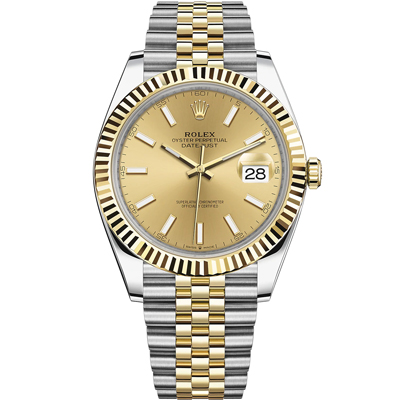
Rolex has constantly set new standards for watch manufacturers to aim up to. Be it with their design, functionality, or accuracy, this brand truly pushes the boundaries of innovation. In terms of accuracy, Rolex engineers have managed to cut it down to just +2/-2 seconds per day. This is unlike any other brand dealing in automatic watches and comes closest to the accuracy of a quartz watch. Check out the Rolex Datejust 41 if you are willing to spend the extra bucks for a luxury high-end watch with high accuracy.
Grand Seiko Hi-Beat movements
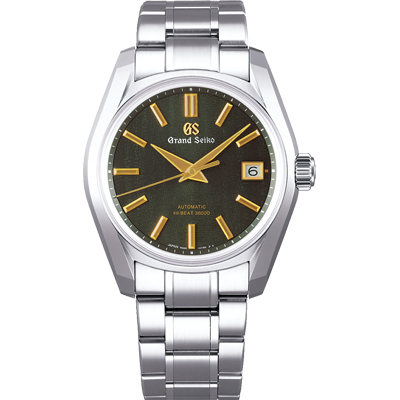
Seiko is a famous brand for quartz watches. Part of the Seiko Holding Corporation is also Grand Seiko, the sister company of Seiko, manufacturing mechanical and automatic watches. Grand Seiko launched as a competition to the rising mechanical watch manufacturers from Switzerland. Given Seiko’s expertise in technology, they soon caught up with the market in making high-quality accurate automatic movements with just a +5/-3 seconds difference per day. The SBGH271 model hosting the 9S85 caliber is one example of automatic movement.